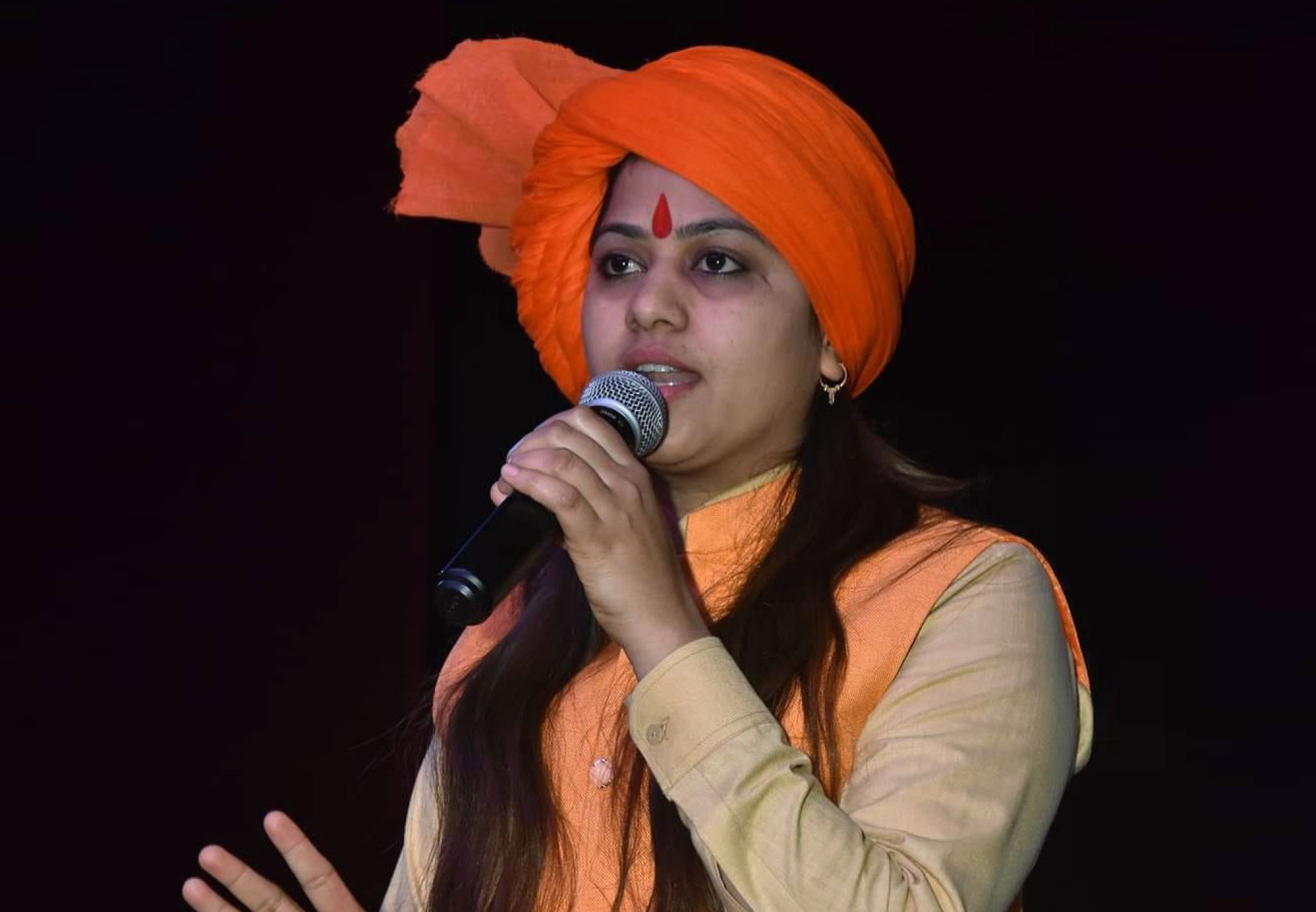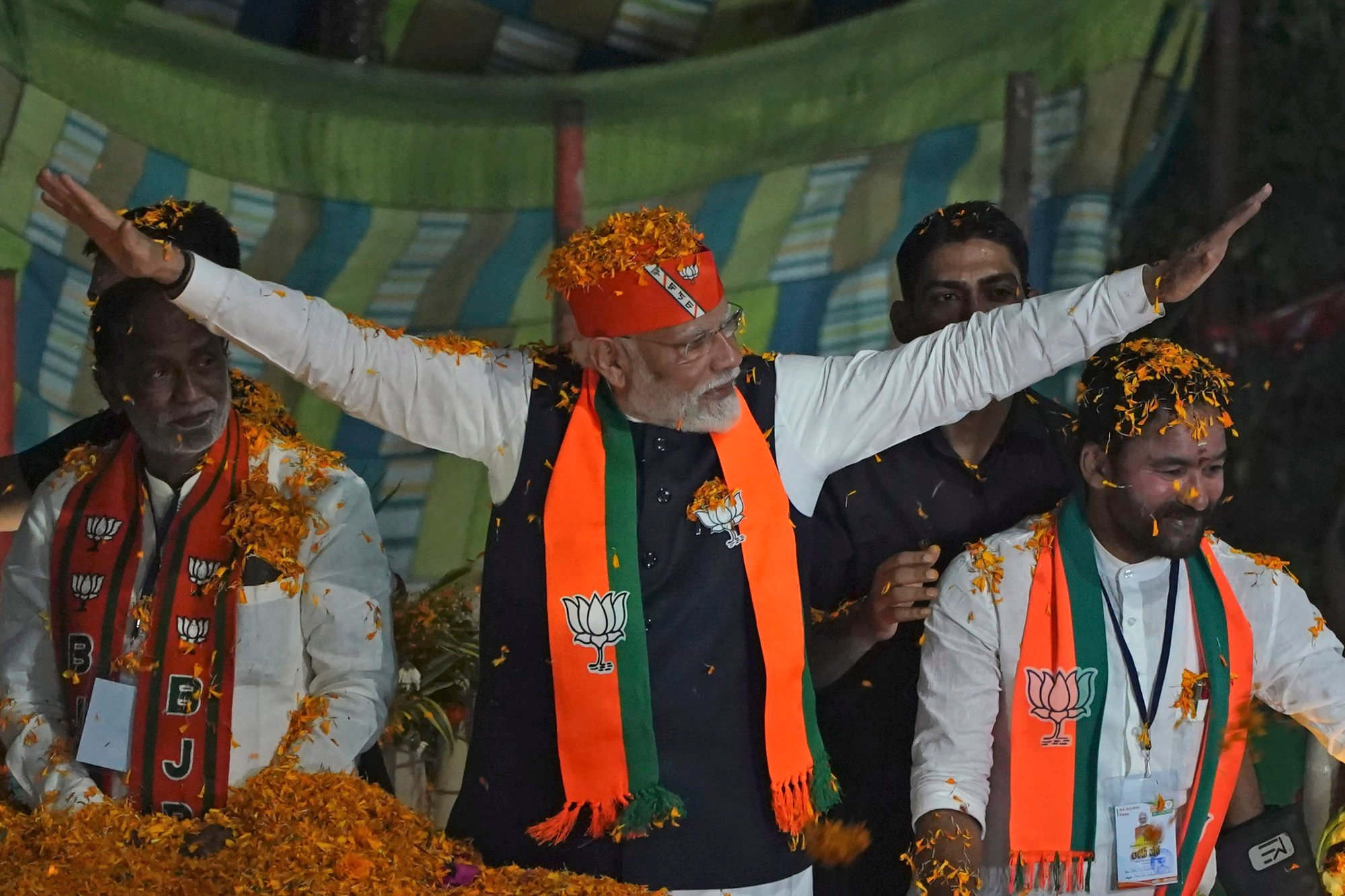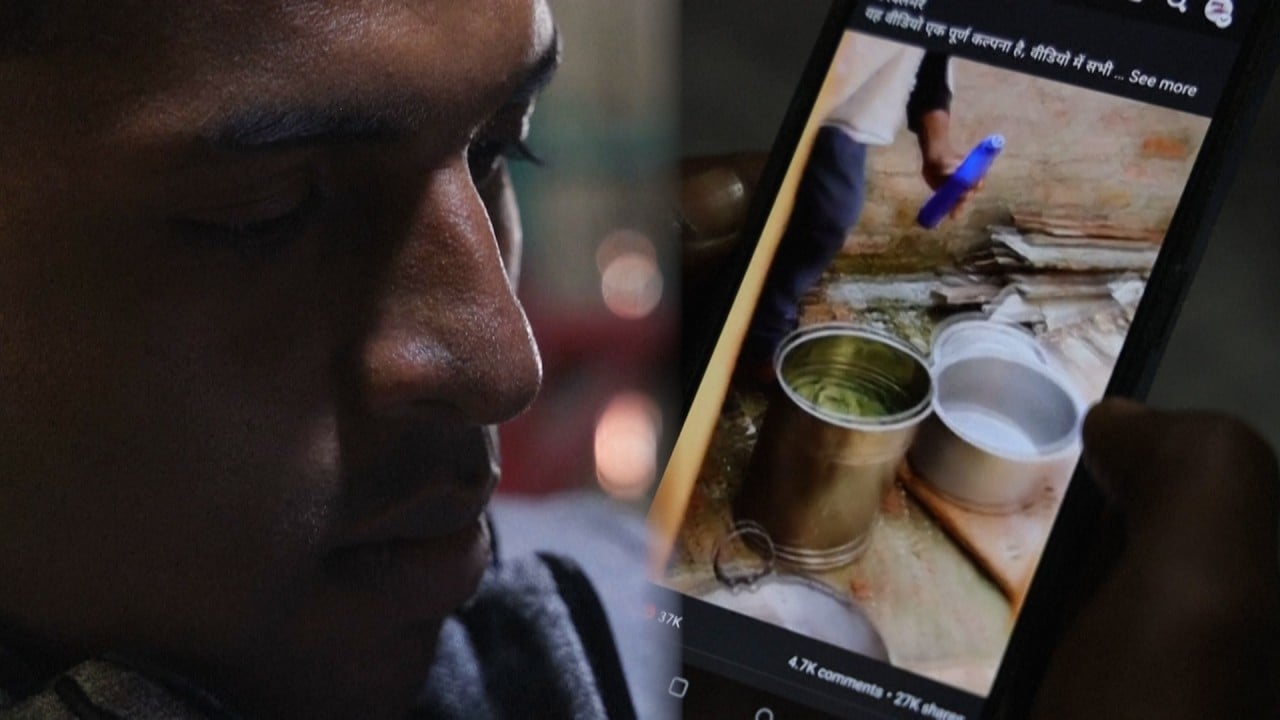
In India, chorus of anti-Muslim hatred grows louder with rise of Hindutva pop
- A wave of young Hindu singers are releasing songs that ‘spew hatred against Muslims’ and other minorities in an emerging genre known as H-pop
- India has seen a rise in hate crimes since the Hindu nationalist BJP took power, and the emergence of H-pop ‘reinforces its political dominance’, an analyst says
With catchy tunes and provocative lyrics, young Indian singers are among a wave of personalities fuelling the rise of Hindutva Pop, or H-pop, a brand of entertainment demonising Muslims and other minorities that observers say has helped fuel real-world violence.
On YouTube, hundreds of H-pop singers openly attack Muslims, calling them derogatory names to thumping beats. The songs are widely shared on social media platforms and passed on from one chat group to another on WhatsApp, collectively racking up billions of views.
“They’re bringing the political project into the cultural realm,” Purohit said, adding that H-pop “stripped off of a lot of the sharp edges political rhetoric carries”.

Most lyrics have a common theme: to wave the saffron flag, a colour associated with Hinduism. Many songs are also dedicated to the Hindu god Ram while featuring dehumanising sentiments against Muslims, contrary to the image associated with the deity known for righteousness and compassion.
Singh and Dubey are among the few notable women in H-pop’s “macho, masculine space” who are in sync with the “aggressive nationalism and violence” of the Hindutva ideology, according to Purohit.
How India’s Gujarat was shaped by East African music and culture
Singh, whose rise to fame is documented in the book, initially wanted a career in beauty and skincare, but now sings about “love jihad” – a phrase used by Hindu nationalists to accuse Muslim men of luring Hindu women into marriage to convert them to Islam – and the need to control the population growth of Muslims, who make up 14 per cent of India’s 1.4 billion people.
“Some people are conspiring / That we will produce many children / When their numbers go past ours / They will make us dance to their tunes,” Singh sings while wearing a saffron turban in a song that has garnered more than 4 million views on YouTube since its release in 2020.
“All the work these pop stars do is part of the larger campaign to create Hindu consciousness among people, to make their religion an important part of their identity,” Purohit said. “It is a product of the times we are living in.”

Soundtrack of hate
Human rights watchdog Amnesty International in 2017 said the growing pattern of hate crime against Muslims, many of which took place in BJP-ruled areas, was “deeply worrying”.
In April 2017, a procession of Hindus in Jharkhand state celebrating the birthday of Ram turned violent after the members played a song with provocative lyrics against Muslims just as they reached a mosque, Purohit wrote in his book, adding that the anecdote led him to dig deeper about H-pop.
Netflix pulls Indian drama that ‘hurt Hindu sentiments’ after religious backlash
While the march did not immediately lead to any harm, a few men from the same crowd later assaulted a local Muslim man after seeing him with a Hindu woman. The man later died in hospital.
“Such forms of entertainment create divisions and spew hatred against Muslims,” said Amir Ali, an assistant professor at New Delhi’s Jawaharlal Nehru University who has written about Hindutva. “It is a very unfortunate manifestation of the complete rupture of the social fabric that has kept India’s two major religious communities together.”
But it isn’t just songs that are becoming the soundtrack of hate. Critics have accused Bollywood, India’s influential Hindi film industry, of spreading Islamophobia in films like The Kerala Story (2023) and The Kashmir Files (2022).
Ali said many Indian films now portray Muslims in villainous roles, often as terrorists, in contrast to earlier times when Muslims and Hindus were portrayed as friends and collaborators.
“This spewing of hatred against Muslims is also seen in India’s noisy and brash news channels, where loud debates give rise to an almost rowdy rhetoric of anger and vilification,” he noted.
The deep, disturbing reach of India’s Hindutva agenda in diaspora
Purohit’s book, which offers an in-depth look into the lives and motivation of H-pop stars, also documents the rise of poets and publishers that are pushing the ruling party’s narratives, as well as those of powerful far-right Hindutva organisations such as Rashtriya Swayamsevak Sangh and Vishva Hindu Parishad.
Poets like Kavi Kamal Agney draw massive crowds at rallies where they reframe historical narratives to suit the BJP’s ideology to thunderous applause.
During the 2022 general election, BJP leaders in Uttar Pradesh approached Agney to take part in political campaigns and produce content that would reach millions through digital platforms. When Yogi Adityanath was reelected as the state’s chief minister, H-pop stars like Agney could claim part of the credit.
The coming election in April and May will be no different, analysts said. Ali added that it was “almost inevitable” the BJP would return to power this year.
“The phenomenon of H-pop is a further element that reinforces the electoral and political dominance of the BJP,” he said. “Such unassailable electoral domination is not good for any democracy.”

Purohit warned the impact and growing influence of H-pop could extend not just beyond the election but also national borders.
Nepal, which shares a porous border and Hindu cultural elements with India, witnessed several pro-Hindu rallies and mass gatherings last year. As public discontent there grows against the ruling parties and their self-interests, the Hindu nationalist Rastriya Prajatantra Party is vowing to bring back the monarchy to “save the country”, though it doesn’t have a concrete plan for that.
And it might only be a matter of time that instruments such as H-pop could be deployed to both draw larger support and divide communities.
“H-pop is packaged to be accessible at all levels of society,” Purohit said. “So it makes a very attractive proposition to everyone spreading the message. It is something that can be used by different political parties to further their messages to assert certain identities and create enemies. We are increasingly seeing and feeling these sentiments.”


